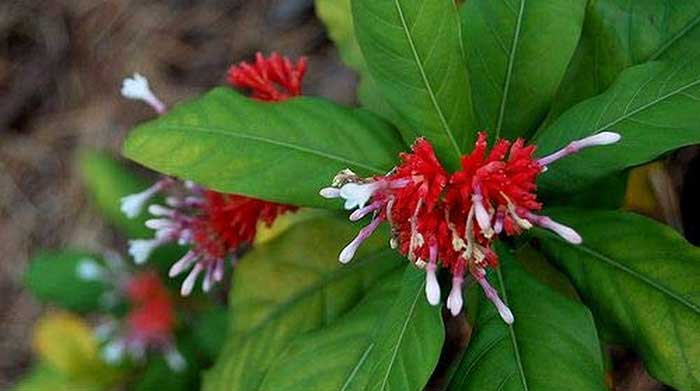Rauwolfia serpentina is an evergreen shrub that is a member of the dogbane or Apocynaceae family. Different studies are available on how people use Rauwolfia serpentina for high blood pressure.
Sadly also, there are other claims that it could have adverse effects. Due to these claims which research later checked to confirm, the use of the plat slowed down.
Basically, there are more than 100 species in the Rauwolfia genus.
The plants are native to tropical and subtropical regions of the world.
You can find them in Europe, Africa, Asia, Australia, and the Central and South Americas.
The other names of Rauwolfia serpentina are Indian snakeroot, devil pepper or serpentine wood.
Indeed, studies say for centuries, Rauwolfia serpentina has been used in folk medicine.
It is mostly in use in India for treatment of a wide variety of maladies.
Some are snake and insect bites, febrile conditions, malaria, abdominal pain and dysentery.
It was also used as a uterine stimulant, febrifuge, and cure for insanity. Also, people have used it as aphrodisiac.
In fact, this plant’s use dates back to 1,000 BC, as it was mentioned in Indian manuscripts writing in that year (1).
Also, people call it sarpagandha and Chandrika.
Rauwolfia Serpentina For High Blood Pressure
Does Rauwolfia serpentina really work for high blood pressure?
From studies, we know that Rauwolfia contains many different phytochemicals.
It offers humans phytochemicals like alcohols, sugars and glycosides, fatty acids, flavonoids, phytosterols, oleoresins, steroids, tannins, and alkaloids.
Of all these compounds the most important alkaloids found in the plant are indole alkaloids, with more than 50 of those alkaloids having been isolated in the plant (2).
Furthermore, indole alkaloids are a group of nitrogenous compounds from the amino acid tryptophan.
One interesting thing about this plant is that all the parts, including the stem and leaves, contain indole alkaloids.
However, study says highest concentration is in the bark of the root.
That said, there is a thing about Rauwolfia and high blood pressure that you should know.
One of the very abundant alkaloids in the plant is Reserpine.
In fact, some studies say it is one of the major alkaloids of the plant (3).
Reserpine is the most widely studied alkaloid in R serpentina. The first modern paper publication on reserpine was in 1931.
A study says reserpine is significantly effective in lowering systolic blood pressure (4).
As a result of the presence of reserpine in this plant, there have been several studies on the effect of Rauwolfia on hypertension.
All of the studies showed it was able to lower both systolic and diastolic blood pressures.
For instance, in 1949, a study of 50 patients with essential hypertension treated with Rauwolfia showed positive outcome (5).
In that study, 85% of patients experienced a drop in systolic blood pressure, and 81% of patients experienced a drop in diastolic blood pressure.
The product caused sedation and usually improved sleep, although it could occasionally cause nightmares in some people, and it could cause bradycardia and nasal congestion in some patients.
Effectiveness Kick-off Time
As for how long it takes to become effective after you take it, a study has something you should know.
According to the study, after oral ingestion, the bioavailability of reserpine could get to between 50% and 70%, although most studies say it is approximately 50% (6).
Absorption is fairly rapid. It occurs between 1 and 2 hours after oral ingestion.
Although, there are reports of slower absorption of between 2 and 4 hours.
How To Use Rauwolfia – Dosage
A study says a total daily dose of Rauwolfia should be lower than 500 mg of root and, in most cases, can be less than 250 mg per day.
Other recommendations are that dosage of purified alkaloid-alseroxylon extract should be lower than 5 mg per day and, in most cases, is less than 2.5 mg per day.
Related Posts
- Tomato Juice: Natural Medicine For Prostate, Fertility, Heart, Liver, Others
- 8 Ways To Stay Safe From Heart Disease
- Avocado Seed, Remedy For Hypertension | Myth Or Truth?
Furthermore, the reserpine dose should be lower than 500 microgram (μg) per day and, in most cases, lower than 250 μg per day.
Also, study recommends that an equivalent tincture dose should be based on the strength of the tincture.
For instance, the dose of a 1:5 tincture would be 0.5 mL, equalling 100 mg of crude root, whereas in a standard dropper, 15 drops would equal 1.0 mL.
All of the dosage above were all in a 2015 study (6).
Safety Percussion
There have been claims that taking this plant as remedy for high blood pressure could increase risk of cancer and depression.
However, the 2015 study said Rauwolfia serpentina was safe for people who are treating high blood pressure.
It says it is unlikely that the use of Rauwolfia increases the risk of breast cancer.
For cases of depression, authors of a research concluded that dosage is an important factor but not the sole factor in development of depression.
Also, it is worthy of note that since the plant works as uterine stimulant, it is advisable that a pregnant woman should not take it.
When taken, it could induce labour in a pregnant woman, making contractions of the uterus happen.
Generally, it is safe to take Rauwolfia for treatment of high blood pressure.



